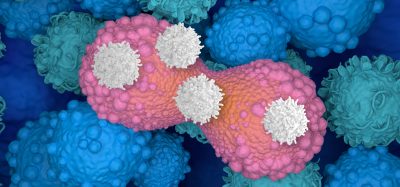Boltz-1: A new open-source AI tool for drug discovery
Posted: 31 December 2024 | Drug Target Review | No comments yet
MIT’s new open-source AI model, Boltz-1, could transform drug discovery by accurately predicting protein structures, offering global access to researchers.


MIT researchers have introduced Boltz-1, an open-source artificial intelligence (AI) model set to accelerate biomedical research and drug development. Developed by scientists at the MIT Jameel Clinic for Machine Learning in Health, Boltz-1 matches the performance of Google DeepMind’s AlphaFold3, which predicts the three-dimensional (3D) structures of proteins and other biological molecules. Unlike AlphaFold3, however, Boltz-1 is fully open-source, making it accessible for use by both academic and commercial researchers.
The development team, led by MIT graduate students Jeremy Wohlwend and Gabriele Corso, along with MIT professors Regina Barzilay and Tommi Jaakkola, introduced the model at an event at MIT’s Stata Center. During the presentation, the researchers emphasised their goal of fostering global collaboration in scientific discovery. “We hope for this to be a starting point for the community,” said Corso. “There is a reason we call it Boltz-1 and not Boltz. This is not the end of the line. We want as much contribution from the community as we can get.”
Proteins play an essential role in virtually all biological processes, and understanding their structure is crucial for drug development. A protein’s 3D shape is tightly linked to its function, so being able to predict how a protein folds from its amino acid sequence is a critical step in designing new therapies. However, predicting this structure has long been a major challenge due to the complexity of protein folding.
Automation now plays a central role in discovery. From self-driving laboratories to real-time bioprocessing
This report explores how data-driven systems improve reproducibility, speed decisions and make scale achievable across research and development.
Inside the report:
- Advance discovery through miniaturised, high-throughput and animal-free systems
- Integrate AI, robotics and analytics to speed decision-making
- Streamline cell therapy and bioprocess QC for scale and compliance
- And more!
This report unlocks perspectives that show how automation is changing the scale and quality of discovery. The result is faster insight, stronger data and better science – access your free copy today
DeepMind’s AlphaFold2, which has already had a profound impact on drug discovery, uses machine learning to rapidly predict protein structures with remarkable accuracy, often indistinguishable from those derived experimentally. However, despite its advancements, AlphaFold3 is not fully open-source and is unavailable for commercial use, leading to criticisms within the scientific community and driving the race for an alternative.
In response, the MIT team built Boltz-1 by following a similar initial approach to AlphaFold3 but improving upon it with new algorithms that enhance prediction efficiency. These adjustments allowed them to achieve comparable accuracy to AlphaFold3, while also offering a completely open-source solution. “It took many days and nights of work, with unwavering determination to get to this point,” said Barzilay. “There are many exciting ideas for further improvements, and we look forward to sharing them in the coming months.”
The researchers now plan to continue improving Boltz-1’s performance and reduce the time required for predictions. They are also keen to invite the global research community to test the model, collaborate, and contribute to its development through the model’s GitHub repository and Slack channel. “We think there are many years of work to improve these models. We are very eager to collaborate with others and see what the community does with this tool,” said Wohlwend.
Boltz-1’s release marks a significant step forward in making powerful AI tools for biomolecular structure prediction accessible to a broader audience, and its open-source nature ensures that it will contribute to the rapid advancement of drug discovery and biomedical research.
Related topics
Artificial Intelligence, Bioinformatics, Computational techniques, Drug Discovery, Drug Targets, Genomics, Proteomics, Target Validation
Related organisations
Google DeepMind, MIT Jameel Clinic for Machine Learning in Health, Stata Center
Related people
Demis Hassabis, Gabriele Corso, Jeremy Wohlwend, John Jumper, Regina Barzilay, Saro Passaro, Tommi Jaakkola








